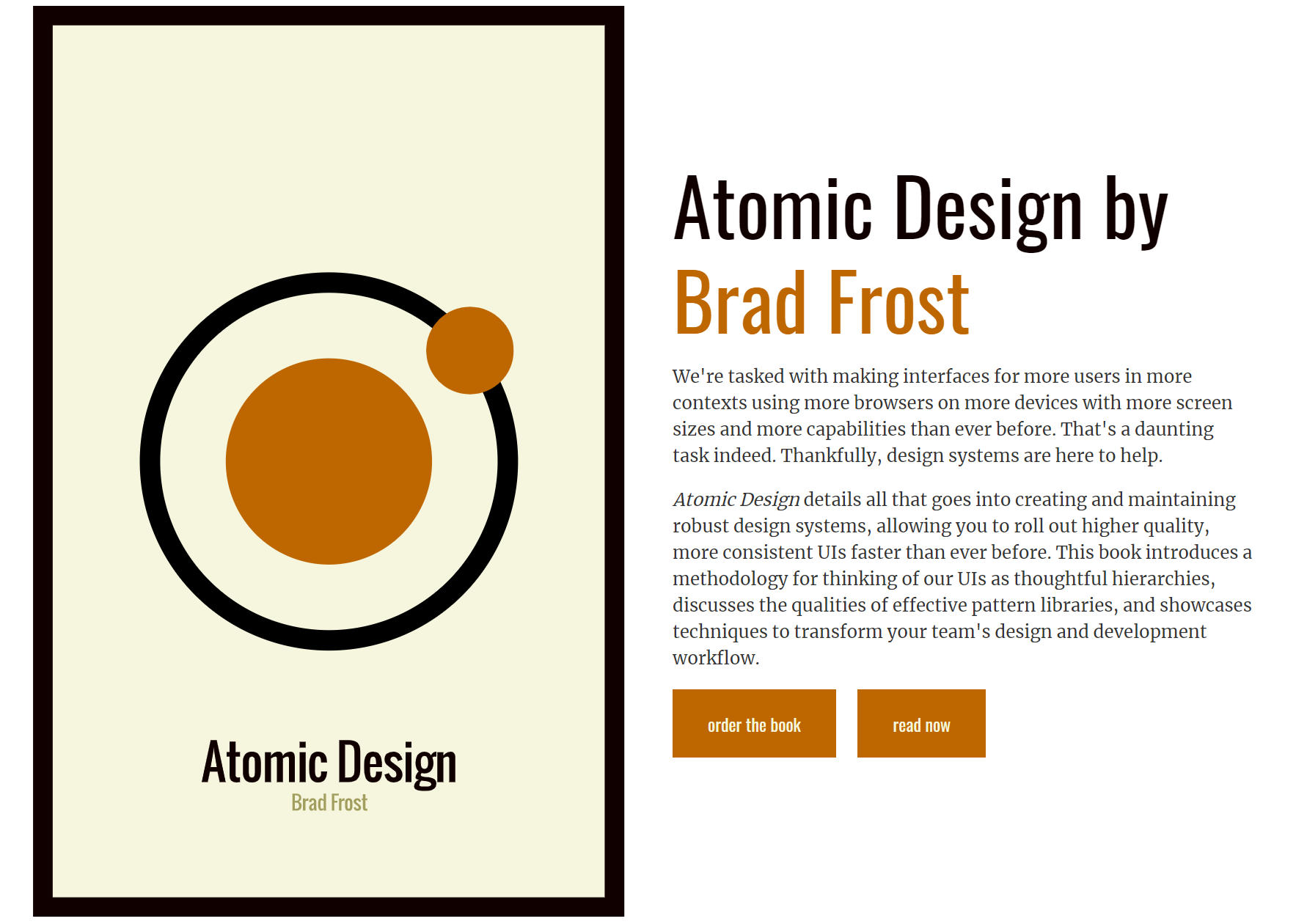Table Of Content

However, there is a lot of flexibility, since these terms are loosely defined. A page, for example, can also mean the screen of a mobile application. An atomic design system puts a lot of focus on the building blocks in any UI/UX project, making sure that the choices made at any point in the design process are thought through. Documentation in the form of a style guide is no doubt helpful, but by itself it’s not enough. It’s essential to provide adequate training and offer ongoing support for your design system’s users to ensure they successfully get up and running with the tool kit and continue to create great work with it. If a relatively scattered, decentralized culture is your reality, don’t be disheartened!
Comprehensive content strategy
Right now, for me the most obvious challenge is to make systematic design the default mode of thinking for designers, agencies, and organizations. I think there’s a tremendous opportunity for design systems to help people build for the future. In addition to demonstrating the final interface as your users will see it, pages are essential for testing the effectiveness of the underlying design system. It is at the page stage that we’re able to take a look at how all those patterns hold up when real content is applied to the design system. If the answer is no, then we can loop back and modify our molecules, organisms, and templates to better address our content’s needs.
Clean separation between structure and content
This chapter introduced the atomic design methodology and demonstrated how atoms, molecules, organisms, templates, and pages all work together to craft thoughtful, deliberate interface design systems. Atomic design allows us to see our UIs broken down to their atomic elements, and also allows us to simultaneously step through how those elements join together to form our final UIs. We learned about the tight bond between content and design, and how atomic design allows us to craft design systems that are tailored to the content that lives inside them. And finally we learned how the language of atomic design gives us a helpful shorthand for discussing modularity with our colleagues, and provides a much needed sense of hierarchy in our design systems.
Atomic design checklist to create your system
As the craft of Web design continues to evolve, we’re recognizing the need to develop thoughtful design systems, rather than creating simple collections of web pages. Aspiring UI/UX designers and students of design can greatly benefit by learning more about atomic design as this approach clearly has a strong future in the field. The following checklist can help you create an effective atomic design system. Here are the reasons why an atomic design works well for organizations. Consisting mostly of groups of organisms to form a page — where clients can see a final design in place. Grouping atoms together, such as combining a button, input and form label to build functionality.
Chapter 4
But I’ll mention a few people here who helped bring this book to life. Huge thanks to my wife, Melissa, who has been with me every step of this process. I’m so incredibly fortunate to be married to such an amazing woman. Thanks to Owen Gregory, who copy edited this book with an awe-inspiring eye for detail.
The future of digital design. Insights from Alan Dargan - Irish Tech News - Irish Tech News
The future of digital design. Insights from Alan Dargan - Irish Tech News.
Posted: Wed, 06 Dec 2017 17:23:42 GMT [source]
The idea of atomic design is inspired by the very basics of chemistry. Atoms joining together in various ways to create molecules and compounds, having a set of properties of their own, lies at the heart of atomic design. A design system, based on this strategy, gives equal attention to the individual design elements as well as the system on the whole. Another way to show context is to provide lineage information for each pattern. As we discussed in Chapter 3, a tool like Pattern Lab automatically generates this information, letting you see which patterns make up any given component in addition to showing where each component is employed. This provides a sort of pattern paper trail that helps immensely with QA efforts, as it highlights exactly which patterns and templates would need to be tested if changes were made to a particular pattern.
Atomic design is for user interfaces
Creating full comps requires a lot of effort, which is why we established the design direction first to mitigate the risk of all that full-comp effort going straight into the trash if we got it totally wrong. The waterfall process may make sense for print, architecture, manufacturing, and other physical media since mistakes and changes are extraordinarily costly. If a team overlooks an error made early in the process, they’ll pay dearly for it later. However, the digital world isn’t constrained by the same limitations as the physical one. Changes can happen in an instant, hypotheses can be quickly tested out, and designs and code can be iterated on again and again. As you might expect, substantial changes to our processes need to happen so we can properly address all these uniquely digital design considerations.

The leader will then combine everything into one giant über-document, which will soon become a wrecking ball of truth and justice. If only getting buy-in were as easy as having a few well-timed conversations with the right people. Maybe you’re savvy enough to seal the deal with talking points alone, but for us mere mortals words aren’t enough.
Components of atomic design
There’s a chance I may bring on an editor to help bring this project to life, but that’s yet to be determined. I will most definitely bring on some people who can help review any technical aspects of the book. Style guides establish a consistent, shared vocabulary between everyone involved in a project, encouraging collaboration between disciplines and reducing communication breakdowns. It’s essential for teams to write legible, scalable, maintainable code. But without a way to promote and enforce code consistency, it’s easy for things to fall apart and leave every developer to fend for themselves.
4 Conferences You Should Attend - Shopify
4 Conferences You Should Attend.
Posted: Fri, 11 Jul 2014 07:00:00 GMT [source]
We discussed earlier how all matter in the universe can be broken down into a finite set of atomic elements. As it happens, our interfaces can be broken down into a similar finite set of elements. Josh Duck’s Periodic Table of HTML Elements beautifully articulates how all of our websites, apps, intranets, hoobadyboops, and whatevers are all composed of the same HTML elements. In order to apply this methodology in my work, I (along with the help of the great Dave Olsen) created a tool called Pattern Lab to actually create these atomic design systems. I’ll cover Pattern Lab in detail later, but feel free to check it out on Github. We're tasked with making interfaces for more users in more contexts using more browsers on more devices with more screen sizes and more capabilities than ever before.
In the context of a pattern library, atoms demonstrate all your base styles at a glance, which can be a helpful reference to keep coming back to as you develop and maintain your design system. But like atoms in the natural world, interface atoms don’t exist in a vacuum and only really come to life with application. This rule of chemistry is followed in the exact manner when it comes to the atomic design system. The nature or properties of these molecules depends on the atoms but the holistic purpose makes a lot more sense and is more stable than that of individual atoms. Several UI elements, such as a button, a text box, an image, or an icon can be a part of the same molecule, collectively serving a singular purpose.

No comments:
Post a Comment